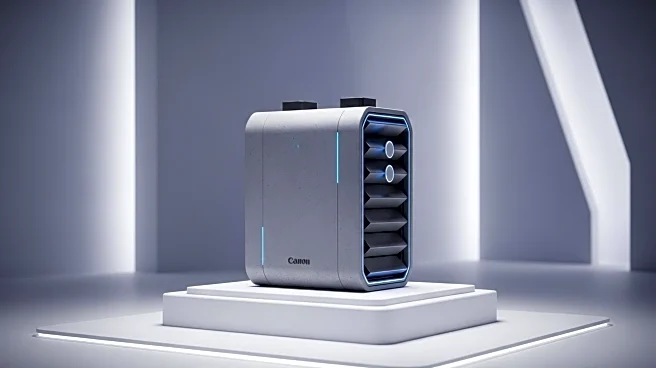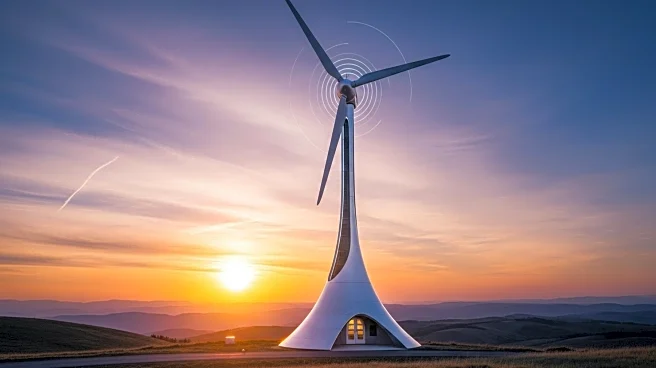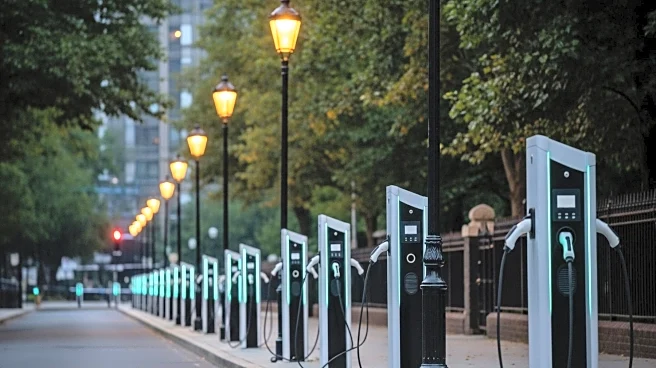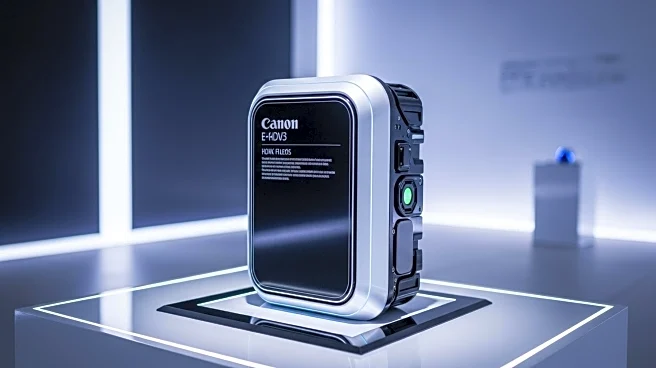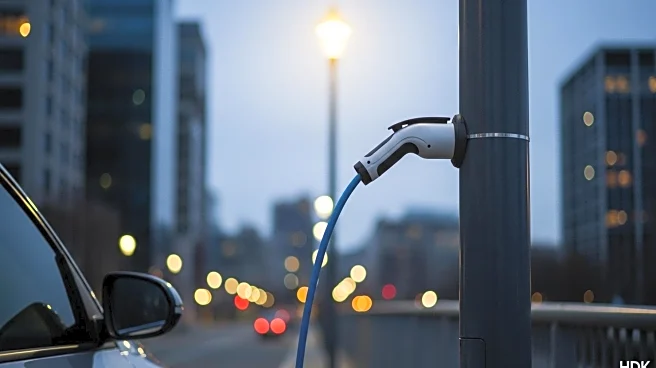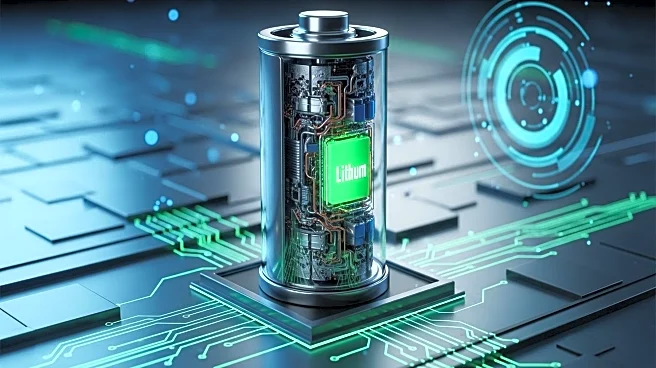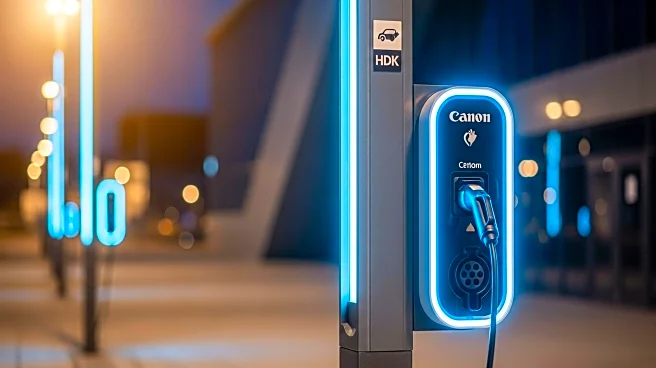What's Happening?
MIT researchers have significantly improved a new type of 'concrete battery,' increasing its energy storage capacity by tenfold. This advancement could transform buildings, bridges, and sidewalks into large-scale energy storage systems capable of powering entire cities. The material, known as electron-conducting carbon concrete (ec³), is created by combining cement, water, a liquid electrolyte, and nanoscale carbon black. This mixture forms a dense, conductive network that can store and release electrical energy. The researchers have achieved a tenfold increase in energy storage capacity since 2023, with five cubic meters of ec³ now able to store over 10 kilowatt-hours of electricity, enough to power a typical household for a day. This development addresses a major challenge in renewable energy: storing power locally when solar or wind energy is not available.
Why It's Important?
The enhancement of concrete batteries represents a significant step forward in renewable energy technology, offering a potential solution to energy storage challenges. By integrating energy storage capabilities into infrastructure, this technology could reduce reliance on traditional batteries, which often use scarce or toxic materials. The ability to store energy in concrete structures could facilitate the transition to renewable energy sources, providing a reliable power supply even when solar or wind energy is unavailable. This innovation could benefit urban planning and sustainable construction, potentially leading to off-grid homes and roads that charge electric vehicles, thereby reducing carbon emissions and promoting energy independence.
What's Next?
The research team is exploring real-world applications for ec³, including its use in sustainable construction and infrastructure. The material has already been tested in Japan for heating sidewalks in snowy conditions, offering an alternative to road salt. Future applications may include homes that operate off-grid and roads that charge electric vehicles. The researchers are also investigating the material's potential to absorb carbon dioxide and repair itself, which could further enhance its environmental benefits. As the technology progresses, it may lead to multifunctional concrete that supports and powers modern infrastructure.
Beyond the Headlines
The development of ec³ highlights the potential for combining ancient materials with modern nanoscience to create innovative solutions for contemporary challenges. This approach not only addresses energy storage issues but also opens up possibilities for sustainable urban development. The ability to integrate energy storage into infrastructure could lead to long-term shifts in how cities are designed and powered, promoting resilience and sustainability in urban environments.

